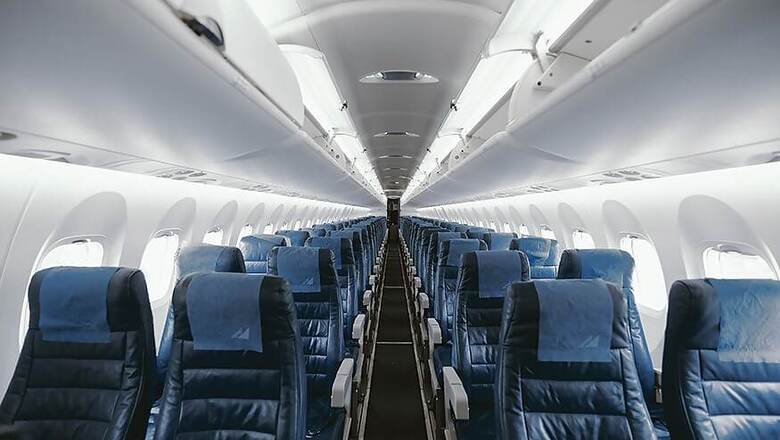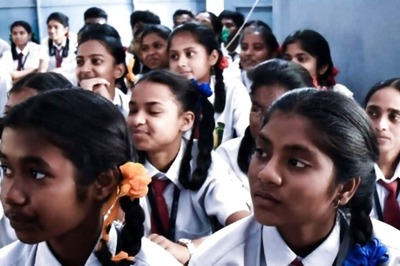
views
After a tough day at work you find yourself searching for destinations you can go to for a long weekend. A friend who is amongst the 93 million users in the 25-34 year demographic on Instagram in India recently posted photos of his vacation and you’re keen to experience something similar. In looking at the prices, you are amongst 1 in 740,000 users that the online travel site will get that day.
These searches are made possible as the website links to the airline inventories via a linkage called the application programing interface (API). At the airline, there is a team of analysts consistently analysing demand in conjunction with algorithms that run on expensive systems and updating the prices and inventory for the airline. They have compared data from the past and once the next five seats for this route sell, the pricing will be revised upwards.
Having found a great fare, you think once again and then go ahead and book the ticket. You’re the last person to get the discounted ticket. Even so, the ticket seems a bit on the higher side. It highlights a fare breakdown which includes INR 177 as an aviation security fee, INR 150 in various fees that are due to the airport operator, INR 50 that goes as a fee to subsidise airline operations to unserved and underserved markets, INR 750 in taxes (central and state GST) and a INR 250 convenience fee that you’re yet to understand. But it’s done and you’re all set. Luckily, the same website also enables you to book hotels which you do but only after making the flight ticket purchase. The holiday is coming together.
On the day of the trip, you book an Uber to get to the airport. With no surge pricing, you’re able to get one for INR 257. On the ride to the airport you speak to the driver and are pleasantly surprised to learn that he is a cashier at the local hospital and drives an Uber on the weekends to save money in order to attend nursing school. At the airport you check-in and proceed to security. After removing your laptop, shoes and belts you’ve finally crossed security. A visit to the food-court and you debate whether to grab a quick idli-sambar or a sandwich and a cup of coffee. You settle for the latter as you can carry it with you to the gate. What would usually have cost INR 100 is costing you INR 400 but you’re in holiday mode so you go right ahead.
You reconfirm your gate number on the flight information display systems (FIDS) screens. To update these with timely information there is a person sitting in the airline’s Operations Control Centre (OCC) relaying information to the airport. Today your gate number is 25 and as you walk you look out at the shiny jets bringing in passengers from all over the country and all over the globe. Your own aircraft is at a remote stand and a bus will take you there. The driver of the bus seems tired and you overhear a conversation which indicates that he is just about to complete his 10 hour shift and his sixth working day straight. For his efforts he is paid INR 16K per month.
The bus pulls up to the shiny new Airbus jet. Just this morning the airline has sent a lease payment of USD 300K to the leasing company. It also had to take a bankline as a credit guarantee to ensure that when it is time to maintain the aircraft the airline has enough cash (technically called maintenance reserves). Then there was also the insurance payment of 1% of the hull value to cover for any damages, the legal costs for regulatory filings and the cost of the new on-board streaming system that is currently on trial. But one look at the jet leaves you mesmerized. How can something that large fly so effortlessly. Indeed a marvel of human innovation and technology.
Many personnel and vehicles are milling around the aircraft. You clearly see fuelling, catering, baggage loading, cleaning and security staff. You also see a pilot doing a walk-around of the aircraft and visually inspecting it. What you don’t know is that he has been recently gone through a proficiency check at a cost of 3 lakhs (borne by the airline). To get here he spent another 50-60 lakhs in training costs alone (borne by his family).
As you stand in line there are ten passengers ahead of you. Looking around, by a rough count there must be fifty personnel. They will repeat this process for 10 flights before the shift changes and a new set of people come in.
Onboard you’re greeted by a friendly crew member. She looks like she recently graduated high-school. Indeed this is her first job. She took a risk and after school enrolled in an Academy that was referred by a friend for which her parents borrowed a princely sum from the village lender. But all’s well now that she has the job in hand. Despite a minimal salary of 30,000 per month from which she has to manage to survive in the city with a high cost of living, she manages her finances well and sends home some cash each month. She also hopes to take her parents flying soon using her flight benefits. Likely to the same destination where the flight is headed today.
Today’s flight will have four cabin crew members and two pilots. They are based in Mumbai and have already flown four sectors. The flight now goes to Goa where they will spend the night at a hotel. Technically this is a layover and every airline has to plan for these and accordingly books hotel rooms throughout the year. This particular airline has 20 rooms per night booked throughout the year along with meals. All billed to the airline. For the hotel it is great as it guarantees cash-flow.
Doors closed, ATC clearance in hand, the aircraft taxis to the end of the runway. A short few minutes and the pilots guide the aircraft to the runway. Full throttle, the engines spool then roar, and the shiny Airbus races down the runway before starting its ascent. Another beautiful takeoff. You do notice that the engines are quieter than usual. This must be the new geared-turbofan technology that you read about in the papers a week ago.
Today’s flight has 150 passengers on board and with 30 rows and 6 seats per row this means the aircraft can seat 180. Effectively the aircraft is flying 83% full (referred to as a load factor). Surprisingly the tickets on the flight were more expensive a few days after you booked them but then prices dropped when you checked a day before. You make a mental note to yourself to book later next time and perhaps avail of a discount. During the flight you’re already thinking of your next holiday. You tell yourself to first finish this one before planning the next.
An uneventful flight and you land at your destination. As you exit the aircraft you see a bevy of personnel. Several with wheelchairs, some are security staff and two are in the airline uniform. The others you can only guess. But you exit the aircraft confidently. You’ve been here before so after collecting the baggage you book a cab (no Ubers here) and head out to your hotel. Two days later, its back to the airport, a flight back home and on Monday back to work again.
Back at work, you go about your regular job. But your trip this weekend and many similar trips have enabled employment for 3,180 airline personnel. These direct jobs in turn have a multiplier effect of 3.1 which means the total jobs created are 6,758. This further creates catalytic impacts across the economy as connectivity drives tourism, trade, talent (the movement thereof), cohesion and tradition (as folks explore more cities they tend to develop a stronger bond to their own hometown enhanced each time they return home). The contribution to economic output, tourism and social development is irreplaceable by any other industry. Airlines become critical to connectivity and to tourism. As India’s Prime Minister Narendra Modi puts it, “Tourism provides employment to the poorest of the poor. Gram seller earns something, auto-rickshaw driver earns something, pakoda seller earns something, and tea seller also earns something.” Airlines are what make this possible.
This interconnected ecosystem has gone on for many years. Yes airlines in India have come and gone, but the market has played its own part. But the coronavirus pandemic has changed things drastically. Airlines have experienced the largest demand shock in history. Demand has evaporated and markets are shut. At least two airlines are looking at extremely grim outcomes and are down to a few days of cash. New reports indicate that a bailout package of INR 1200 crores is being discussed. Effectively the tax-payer is being asked to help the airline industry. An unfair demand by several standards but one that is required.
Is a bailout fair? Maybe not. It is necessary? Yes. But why you may ask.
Because airlines sit at the apex of the aviation value chain and by extension the tourism value chain. And in case of airline failures (especially large airline failures) there is a significant impact to the “aviation economy.” This impact may otherwise have been swallowed. But collectively when the industry is looking at a situation where the very markets it serves are shut, failing a bailout the outcome is extensive job losses – not only to airlines but across the value chain.
And just as there is a multiplier effect when airlines grow, there is a cascading contagion when airlines collapse. Each aviation job loss leads to other job losses that support the industry and that exist because of the catalytic impact of aviation. Very few industries carry this characteristic.
Of India’s six large airlines only two will make it through without a bailout. And with markets shut coupled with fragile balance sheets the outcomes for the remaining four airlines are extremely dire. With time running out, the debate should not be on the bailout rather on the structure of a bailout which ensures that over the medium and long-term the funds are recovered, covenants on use of funds and forcing of consumer facing measures. Without a bailout, airline failures are inevitable and in the current scenario avoiding them is critical.
Because when airlines fail, ironically, it’s not the airlines that fail. Rather it’s the livelihood of people across the aviation value chain. It’s the aspirational student wanting to be a nurse; it’s the vendor at the airport food-court who sold you the sandwich; it’s the bus-driver who took you to the aircraft; it’s the analyst who manipulates large amounts of data in a basic excel spreadsheet and cross-references it with algorithms in order to load airline prices each day; it’s the crew member wanting to take her parents on their first flight; it’s the wheel-chair attendant who proudly tells his folks that he works at the airport…
This is the situation that industry and government want to alleviate. This is exactly why governments are rushing to bailout airlines.
The author is an India market expert and has held a variety of roles within the aviation business. He is also a certified pilot with an instrument rating.




















Comments
0 comment